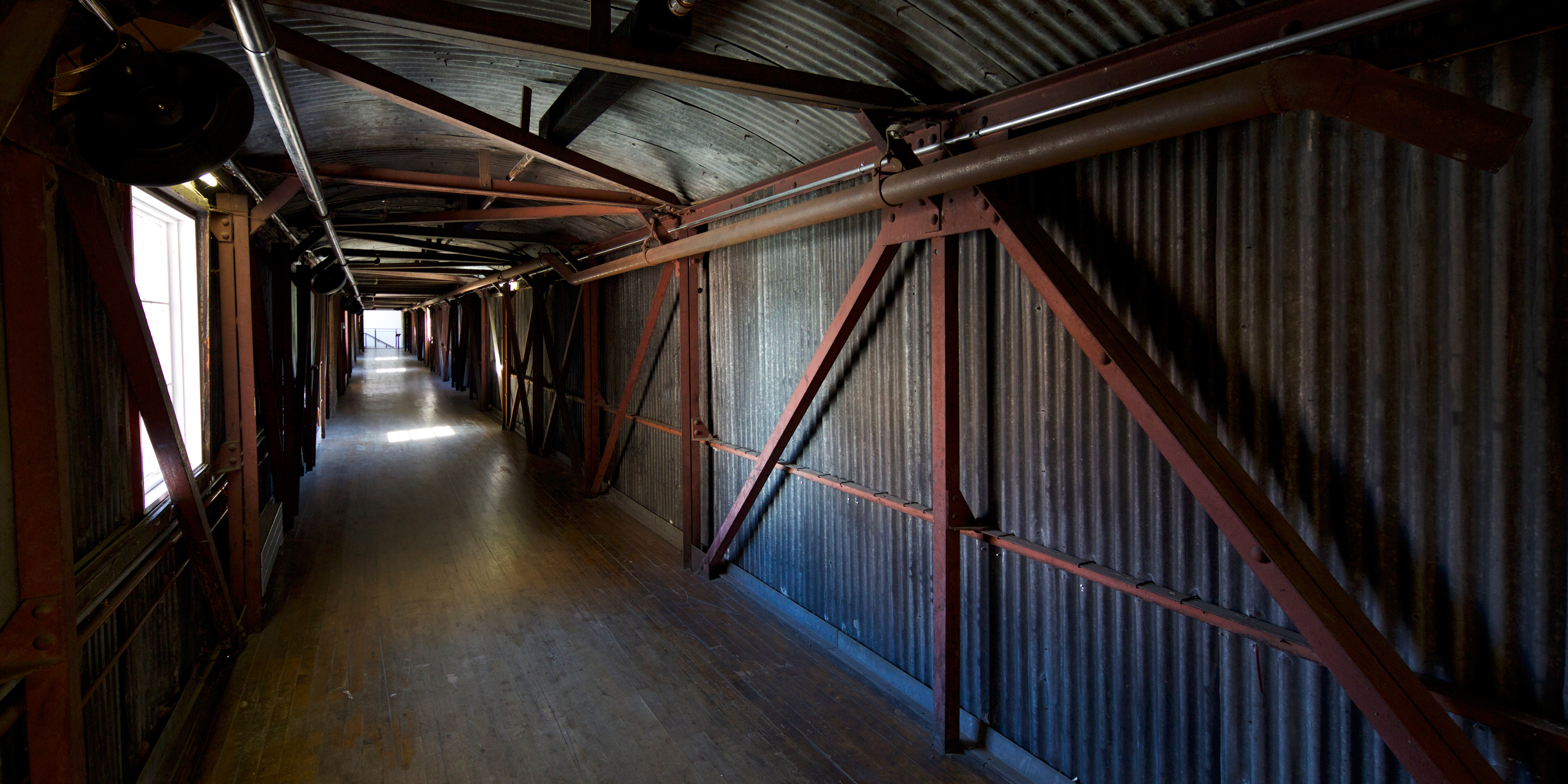 Exhibition
Exhibition- On view now
- MASS MoCA
Julianne Swartz’s work is rooted in emotion, vulnerability, and the provocation to recognize and connect to one another as feeling human beings. Over the years Swartz has returned again and again to using the human voice, recording singers both professional and amateur to create moving works that embrace visitors with sound and emotion.
For In Harmonicity, The Tonal Walkway, Julianne Swartz started with a chart she found in a 19th-century music pedagogy system called the “Tonic Sol-Fa” School, developed by John Curwen. The chart assigned “mental effects” to the seven tones of the diatonic scale. Swartz was interested in this idea of certain tones activating specific emotional or mental states. She then took this “Curwen Method” and applied it to a new sound work for MASS MoCA, on long-term exhibition in the walkway between the lobby and the Sol LeWitt Wall Drawing Retrospective. “Inharmonicity” is a word used to describe a departure from the ideal harmonic series (being out of tune), but it has also been attributed to bringing a “quality of warmth” to the sound of a stringed instrument.
To build this work, Swartz started by recording 24 people individually — eight professional singers, including Roomful of Teeth, and 16 amateur singers. The singers ranged in age from 7 to 75. During the recording process, she asked participants to listen to specific tones and read the “mental effect” associated with that tone, as assigned by Curwen. Then she asked them to listen to the tone again and come up with their own mental or emotional association. Lastly, she instructed them to sing individual notes of both the diatonic and chromatic scales, using any syllabic/consonant-vowel combination that they wished. The single-note sounds took on specifics of the individual singers’ choices and voices.
Swartz then took these recording and made a composition of the single note sounds using a chord structure of thirds and fifths. The soundtrack is made entirely of singing, spoken word, and sustained microtones of voice. The microtones are made by isolating a tiny kernel (such as a quarter second) of voice or breath, and repeating it until it becomes a sustained tone. These sustained tones, especially the low frequencies, vibrate the space and can sound like mechanical or industrial sounds. Swartz created a composition of voice utilizing the 150+ foot length of the space to “throw” sound back and forth along the stretch of the bridge and make aural illusions with distant and proximate spatial harmonies. The sounds constantly move through the space, and listeners’ perception of it changes as they walk or stand still, creating effects of harmony and disharmony, concord and dissonance — the emotional states created by listening to voices join together.
Featuring the voices of Estelí Gomez, Cameron Beauchamp, Eric Dudley, Martha Cluver, Thann Scoggin, Elisa Sutherland, Eliza Bagg, Stella Prince, José Chardiet, Nicolas S. Eugst Mathews, Isabel Vázquez, Lulu Hart, Maria Sonevytsky, Edwina Unrath, David Moss, Sue LaRocca, Jennifer Odlum, Molly Odlum, Frida Balloghi-Smith, Marshall McConville, Jenny Monick, Junah Sibony, and Elodie Sibony. Special thanks to Brad Wells, director, Roomful of Teeth, and Ben Senterfit, director, Community Music Space, Red Hook, New York.
In Harmonicity, The Tonal Walkway, 2016
Site-specific, 20-channel sound installation; 13:40-minute loop
Sound consultant: Bob Bielecki
Courtesy of the artist
Photo: Zoran Orlic


